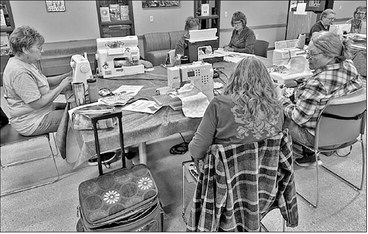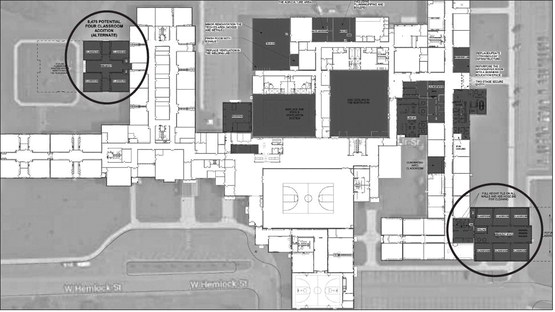Airport asks Marathon Co. for $150K to attract carriers
By Kevin O’Brien
As part of its efforts to attract more lowcost air carriers, the Central Wisconsin Airport is asking Marathon County for $150,000 to help establish a fund that would cover the losses of airlines who fall short of covering their costs on new routes.
CWA director Brian Grefe spoke to a pair of county committees last Thursday about plans to create a Regional Aviation Development Fund, which would be used to shore up carriers that come to CWA and initially struggle to meet costs with ticket sales and fees. The fund would allow CWA to offer a Minimal Revenue Guarantee (MRG) program, with an initial balance of $500,000 made up of contributions from Marathon and Portage counties and area foundations.
“It’s important to understand that this isn’t a subsidy to an airline or a direct payment,” he said. “It’s a temporary financial safety net.”
MRGs typically cover shortfalls for 12 to 24 months, he said, allowing airlines time to establish successful routes. Portage County, which co-owns the airport with Marathon County, is being asked to contribute $100,000 to the fund based on its share of the ownership, and the rest is being sought from private sources.
According to data from a Federal Aviation Association (FAA) study, Grefe said an MRG of $500,000 would translate to $3 million in increased economic activity. If the MRG were to grow to $1.5 million, the potential impact would triple to $9 million, he said.
At the $500,000 level, Greve said the hope would be to draw in an airline that offers seasonal flights to vacation destinations such as Orlando and Fort Meyers in Florida, Las Vegas and Phoenix. With an MRG of $1.5 million, Grefe said there’s potential to re-establish a daily business route to Detroit with a larger carrier.
“If successful, this would support regional businesses and workforce, attract investment and talent into our region, enhance tourism, and provide critical travel connections to the
See CWA/ Page 5 CWA
Continued from page 1
world,” he said, noting that MRGs have become standard practice in the airline industry.
Still, a couple members of the Education, Extension and Economic Development Committee (EEEDC) wondered whether this fund, especially at the $500,000 level, would really benefit anyone besides those looking for low-cost leisure travel.
Supervisor Tom Rosenberg questioned how the seasonal routes that Grefe mentioned would help the regional economy.
“Those sound like cheap vacations and not business,” he said. “That’s not generating anything in our community particularly. It’s sending people somewhere else to spend their money.”
Grefe said that’s a fair point, calling the seasonal routes the “lowest hanging fruit,” but he is simultaneously talking to larger airlines like Delta, United and American to reestablish business routes with help from an MRG. When Rosenberg pressed him on how the county would not get stuck paying for poor business decisions made by airlines, Grefe said he would never support a new route being established without data to suggest that it would be successful.
Right now, Grefe said CWA retains about 25 to 30 percent of the air travel passengers from this area, with 70 to 75 percent going elsewhere to fly, so the objective is to make locally based flights more attractive while building the airport’s capacity.
“If we filled every single seat that we have available, we could not serve the travel needs today of Central Wisconsin,” he said.
Grefe also addressed CWA’s recent experience with Avelo Airlines, a carrier that withdrew from the airport last year after just 10 months of flights to Orlando, despite an initial investment of $260,000 by CWA. He said the airline was actually seeing some success with its flights, providing good data for him to share with other low-cost carriers, but the company ultimately decided to restructure.
“The reason they pulled out was business strategy,” he said. “They completely pulled out of the entire Midwest.”
Supervisor Randy Fifrick said the county shouldn’t discount the value of leisure travel, saying that it’s another way to attract people to the area. Being able to get on a plane without having to drive to Milwaukee or Minneapolis is something a lot of people appreciate, he said.
“That’s a great benefit to our area,” he said. “If we can offer that, and also increase our business travel, I think that makes a lot of sense, and it’s another great thing we can offer as a community.”
SupervisorAnn Lemmer said she personally had a good experience flying with Avelo, but she believes the county’s money would be better spent on local transportation options, such as bus service and other microtransit, especially for elderly citizens.
“I’m having a hard time not considering this a subsidy to a kind of an elite way to travel, when I think I would rather support something that can hit the masses,” she said.
Supervisor Chris Dickinson, chairman of the Central Wisconsin Joint Airport Board, pushed back on the notion that $150,000 wasn’t a good investment for the county to make in regional air travel. Dickinson noted that CWA used to offer 12 flights from three legacy airlines, and it is now down to five flights from two carriers.
Dickinson said CWA has done a lot of work in recent years to bring back more air travel options to the area, and even though Avelo Airlines did not stay long, he said the load factors were as high as 75 to 80 percent during the winter months.
“So, people were using it and flying it,” he said. “It wasn’t our fault that they left. It was their business. That was the reason they left.”
Going forward, Dickinson said the MRG program would benefit the entire community, whether it’s people looking to go on vacation or businesses seeking a local air travel option.
“I look at this as an opportunity, for us as a community, to say Central Wisconsin Airport is important to us. It’s important to all of our citizens,” he said. “I don’t think it’s a big ask.”
Ultimately, the EEEDC voted 52 to include a $150,000 allocation in the 2026 budget for the MRG, with Lemmer and Rosenberg voting no. Earlier in the day, members of the Infrastructure Committee voted unanimously to advance the proposal, which now goes to the Human Resources, Capital and Finance Committee before going to the full board.





